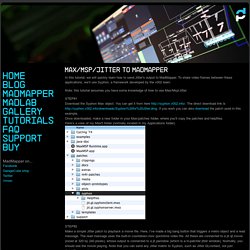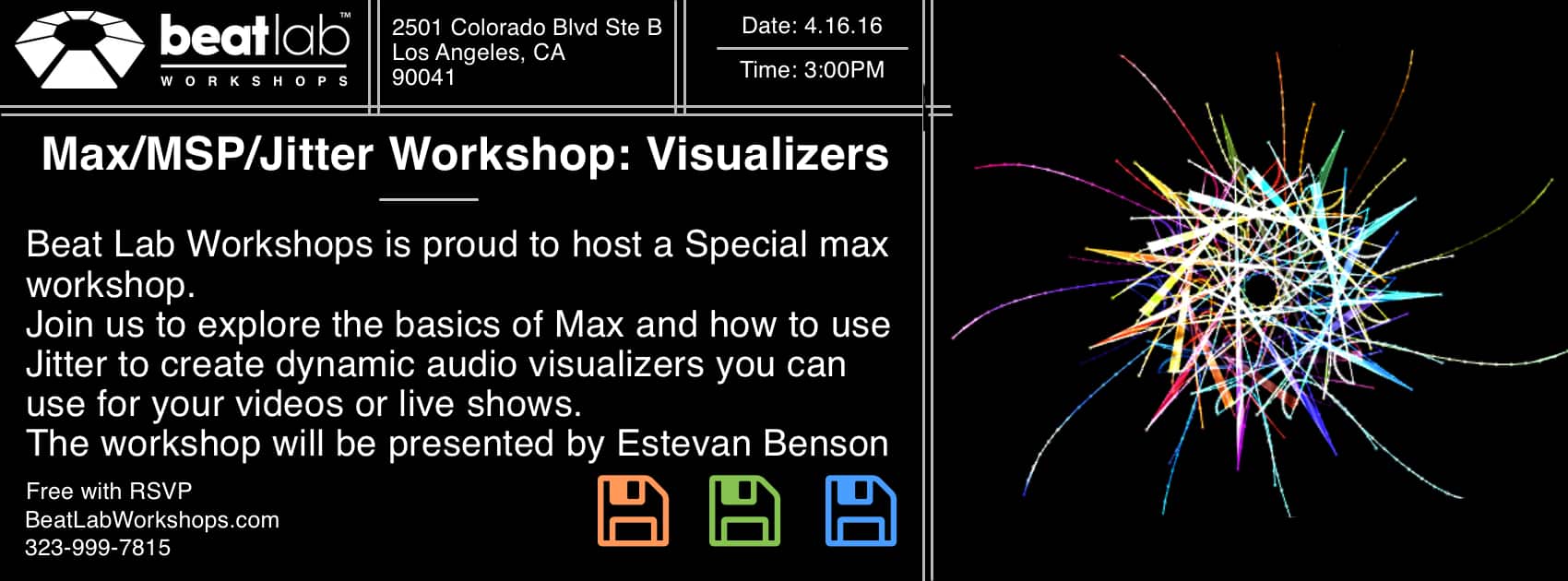- Jitter Tutorials Max 5 Patch Download Windows 7
- Jitter Tutorials Max 5 Patch Download Pc
- Jitter Tutorials Max 5 Patch Download Free
- Jitter Tutorials Max 5 Patch Download Torrent

Project feedback - is a bit of a mess to look at but is essentially a mashup of a feedback patch which is one of the Jitter example patches and one of the tutorials involving gl gridshapes. You can use the pads to flick between presets and you can use the first two knobs on knob page 01 to mess around with the feedback. Knobs 4 to 8 control the. Posted in MadMapper with tags jitter, madmapper, max msp, tutorial on June 10, 2011 by Francois Wunschel Hi, in this tutorial, we will quickly learn how to send Jitter’s output to MadMapper. To share video frames between application, we’ll use Syphon.
Access the largest collection of free and open source component libraries.
Download Patch & Code. Sending Multiple Input data from Max/MSP to Arduino – using Shift Register. We can think of two possible ways to send data from Max/MSP to Arduino. Sending data as a list with index/address and value together, 2. Sending data one at a time, index/address first followed by value. In the case #1, it seems more clear.
si5317_10.lbr by samuell
Si5317 jitter filter from Silicon Labs. This is a filter specially designed for clock signals. The Si5317 is fully configurable, allowing both the work frequency and loop bandwidth to be set. It admits different types of clocks (CML, CMOS, LVDS or LVPECL), being capable of producing such levels too. Based on Silicon Laboratories' 3rd-generation DSPLL technology, the Si5317 outputs a clock signal having a typical jitter of 300fs.

sxx8xsx_10.lbr by samuell
SxX8xSx SCRs (silicon controlled rectifiers) from Littelfuse (Teccor). These thyristors can control currents up to 0.51A (or 0.8A average), having a maximum voltage drop of 1.7V.
polyfuse-smd_20.lbr by samuell
Littelfuse Polyfuse devices. This new version of the library contains the most recent surface mount resettable fuses (PPTCs) from Littelfuse.
p8x32a_11.lbr by samuell
P8X32A microcontroller from Parallax. This is a 32bit, 8-cog multiprocessor microcontroller, for high speed application that offers a low power consumption. This library contains all available variants. The schematic symbol of the P8X32A was simplified in this new revision.
wurth_elektronik_passive_rev16c.zip by WEeiSos
Wurth_Elektronik_Passive_rev16c
wurth_input-output_connectors_rev16b.zip by WEeiSos
Wurth_Input-Output_Connectors_rev16b
wurth_terminal_blocks_connectors_rev16b.zip by WEeiSos

Wurth_Terminal_Blocks_Connectors_rev16b
micrel2.rar by D345thjk
MIC1557 IttyBitty CMOS RC Oscillator, as a Win RAR archive.
wurth_semiconductors_rev16b.zip by WEeiSos
Wurth_SemiConductors_rev16b
wurth_electronics_midcom_inc_v2-1.lbr by tkangas
Wurth Electronics Midcom's V2.1 Transformer Library contains pad layouts, schematics, pinouts, and basic part information.
Final Patches: 24/04/2013 Max_patches_for_submission. Click on the link and they should download. Enjoy!
Master Patch
Jitter Tutorials Max 5 Patch Download Windows 7
Audio Patch
Final RandomAudio Mode Patch
We have decided that to controll the data coming from the Arduino we will use Max/MSP and Jitter. Using the numbers coming into max we will trigger the sound and visuals for the installation. This page contains photos of the patches we have built.
Video Crossfader to work with the Arduino
Jitter Tutorials Max 5 Patch Download Pc
Guts of the video launcher. The only reason to go in here is to load the videos.
Top view of the video launcher designed to take numbers from the Arduino
Max/Maxuino communicating with Max 4 Live
The clip launcher patch is now evolving. The top most section is receiving data from the Maxuiono patch (via send/receive objects). THe patches are running separately because Maxuiono doesn't seem to work in Max 4 Live
Maxuino patch with “sends” to Max 4Live
Standard downloaded Maxuino patch with 'send' objects going to the Max 4Live patch
Jitter Tutorials Max 5 Patch Download Free
Data Smoother:
The data coming in from the Arduino tends to jump around a lot so it will first run through. the below series of objects to “calm it down”
Sample Triggering patch
This is the top layer view of the patch that will control the audio via the Arduino and Max. At the moment I am using the “Key” object to simulate incoming data by pressing key board keys but this will be replaced by the data stream from the Arduino which will have passed through the above smoothing patch first. These patches will eventually be combined into one larger patch. As yet I have not decided whether the same patch will control the visuals as well as the audio although in the patch below there is provision for simple video playback.
Max talking to Live Set
Random Mode
I have also created a random playback mode which will take over when a critical level of “stress” input is reached. This is a subpatcher in the main control patch and it is attached to a “gate” which means that when random playback mode has been enabled signals from the Arduino will no longer control the audio. The random mode does not play entire scenes but randomly triggers samples from within those scenes and although the samples all work together musically, some of the combinations are a little strange. I have included this mode to represent the loss of control people feel when they are overly stressed. Below is the “random mode” subpatcher.
Jitter Tutorials Max 5 Patch Download Torrent
this patch will eventually have to be at least three times the size!!!!